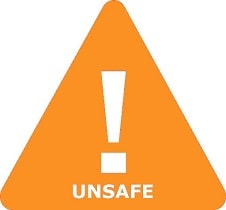Is (((2-(6-Amino-9H-purin-9-yl)ethoxy)methyl)phosphinylidene)bis(oxymethylene) 2,2-dimethylpropanoate Safe in Breastfeeding
Question
I am a breastfeeding mother and i want to know if it is safe to use (((2-(6-Amino-9H-purin-9-yl)ethoxy)methyl)phosphinylidene)bis(oxymethylene) 2,2-dimethylpropanoate? Is (((2-(6-Amino-9H-purin-9-yl)ethoxy)methyl)phosphinylidene)bis(oxymethylene) 2,2-dimethylpropanoate safe for nursing mother and child? Does (((2-(6-Amino-9H-purin-9-yl)ethoxy)methyl)phosphinylidene)bis(oxymethylene) 2,2-dimethylpropanoate extracts into breast milk? Does (((2-(6-Amino-9H-purin-9-yl)ethoxy)methyl)phosphinylidene)bis(oxymethylene) 2,2-dimethylpropanoate has any long term or short term side effects on infants? Can (((2-(6-Amino-9H-purin-9-yl)ethoxy)methyl)phosphinylidene)bis(oxymethylene) 2,2-dimethylpropanoate influence milk supply or can (((2-(6-Amino-9H-purin-9-yl)ethoxy)methyl)phosphinylidene)bis(oxymethylene) 2,2-dimethylpropanoate decrease milk supply in lactating mothers?
(((2-(6-Amino-9H-purin-9-yl)ethoxy)methyl)phosphinylidene)bis(oxymethylene) 2,2-dimethylpropanoate lactation summary

- DrLact safety Score for (((2-(6-Amino-9H-purin-9-yl)ethoxy)methyl)phosphinylidene)bis(oxymethylene) 2,2-dimethylpropanoate is 5 out of 8 which is considered Unsafe as per our analyses.
- A safety Score of 5 indicates that usage of (((2-(6-Amino-9H-purin-9-yl)ethoxy)methyl)phosphinylidene)bis(oxymethylene) 2,2-dimethylpropanoate may cause serious side effects in breastfed baby.
- Our study of different scientific research indicates that (((2-(6-Amino-9H-purin-9-yl)ethoxy)methyl)phosphinylidene)bis(oxymethylene) 2,2-dimethylpropanoate may cause moderate to high side effects or may affect milk supply in lactating mother.
- Our suggestion is to use safer alternate options rather than using (((2-(6-Amino-9H-purin-9-yl)ethoxy)methyl)phosphinylidene)bis(oxymethylene) 2,2-dimethylpropanoate .
- It is recommended to evaluate the advantage of not breastfeeding while using (((2-(6-Amino-9H-purin-9-yl)ethoxy)methyl)phosphinylidene)bis(oxymethylene) 2,2-dimethylpropanoate Vs not using (((2-(6-Amino-9H-purin-9-yl)ethoxy)methyl)phosphinylidene)bis(oxymethylene) 2,2-dimethylpropanoate And continue breastfeeding.
- While using (((2-(6-Amino-9H-purin-9-yl)ethoxy)methyl)phosphinylidene)bis(oxymethylene) 2,2-dimethylpropanoate Its must to monitor child for possible reactions. It is also important to understand that side effects vary largely based on age of breastfed child and time of medication in addition to dosage.
- Score calculated using the DrLact safety Version 1.2 model, this score ranges from 0 to 8 and measures overall safety of drug in lactation. Scores are primarily calculated using publicly available case studies, research papers, other scientific journals and publically available data.
Answer by Dr. Ru: About (((2-(6-Amino-9H-purin-9-yl)ethoxy)methyl)phosphinylidene)bis(oxymethylene) 2,2-dimethylpropanoate usage in lactation
Antiviral nucleotid medication used for treatment of chronic hepatitis B. Usually a long-term treatment is required. No data on secretion into breast milk are available. It may affect renal function.
Alternate Drugs for Antivirals for systemic use. ATC J05
Acyclovir(Safe)
Famciclovir(Low Risk)
Oseltamivir(Safe)
Abacavir(Safe)
Didanosine(Unsafe)
Efavirenz(Unsafe)
Emtricitabine(Safe)
Indinavir(Unsafe)
Lamivudine(Safe)
Nelfinavir(Unsafe)
Nevirapine(Low Risk)
Ritonavir(Unsafe)
Saquinavir(Unsafe)
Tenofovir(Safe)
Zidovudine(Low Risk)
Zanamivir(Safe)
Ribavirin(Low Risk)
Dasabuvir(Low Risk)
Daclatasvir(Low Risk)
Ombitasvir(Low Risk)
Ledipasvir(Low Risk)
Sofosbuvir(Low Risk)
Simeprevir(Low Risk)
Velpatasvir(Low Risk)
Ganciclovir(Low Risk)
Valganciclovir(Low Risk)
Adefovir Dipivoxil(Unsafe)
Oseltamivir Phosphate(Safe)
Amprenavir(Unsafe)
Brivudine(Low Risk)
Valaciclovir(Safe)
Cidofovir(Unsafe)
Foscarnet(Unsafe)
Lysozyme(Safe)
Rimantadine Hydrochloride(Low Risk)
Zalcitabine(Unsafe)
Tribavirin(Low Risk)
Globulin G1(Safe)
Azidothymidine(Low Risk)
Azt(Low Risk)
Muramidase(Safe)
Aciclovir(Safe)
BW-248U(Safe)
Ddi(Unsafe)
Acycloguanosine(Safe)
